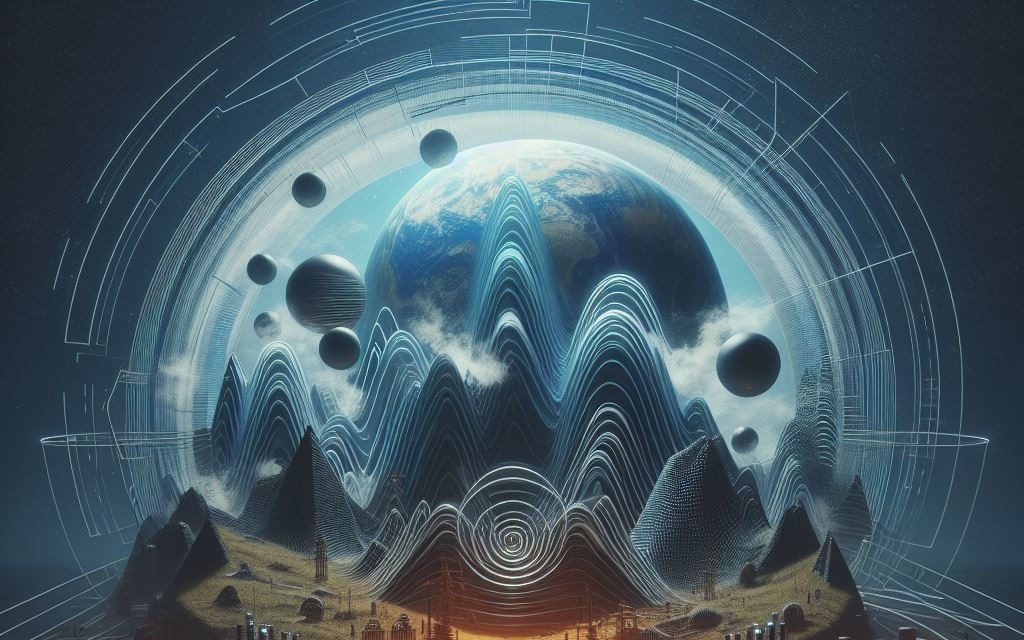
Sound Design and Manipulation
Sound design is a fundamental aspect of music production, offering endless possibilities for creative expression and innovation. Two key elements of sound design that can elevate your music to new heights are sampling and effects processing. In this exploration, we will delve into the art of sampling and the transformative power of effects processing to help you craft captivating sounds and shape the sonic landscapes of your tracks.
Sampling: Chopping and Rearranging Audio Snippets
Sampling is a technique that involves taking snippets of audio from various sources and rearranging them to create entirely new compositions. This approach not only adds depth and character to your music but also allows you to pay homage to musical history by incorporating iconic sounds into your work.
Sampling enables you to breathe new life into old recordings, giving them a fresh perspective and context within your own music. Whether its a classic drum break, a vocal hook, or an obscure field recording, sampling allows you to experiment and reimagine these elements in exciting ways.
The art of sampling often involves meticulous chopping and slicing of audio snippets. By selecting specific segments and arranging them strategically, you can build unique rhythms, melodies, and textures that define your signature sound.

Effects Processing: Shaping Sonic Landscapes
Effects processors are the secret weapons in sound design, offering a vast array of sonic possibilities. Let us explore the role of some common effects, such as reverb, delay, and distortion, in shaping your musics sonic landscape.
Reverb
Reverb is all around us in the real world. When you speak in an empty room, shout in a canyon, or clap your hands in a cathedral, you hear the sound reflecting off surfaces and blending together to create a sense of space. In the context of music production, reverb is used to emulate this phenomenon, giving sounds a sense of place and distance.
Imagine a vocalist singing in an anechoic chamber, a room designed to eliminate all reflections. The voice would sound dry and lifeless. Now, picture the same vocalist performing in a grand concert hall, where the sound reverberates off the walls and ceiling, creating a warm and enveloping ambiance. This contrast illustrates the transformative power of reverb in music.
At its core, reverb is the result of sound waves bouncing off surfaces and interacting with each other. When a sound source emits a signal, it travels through the air and encounters various surfaces in its environment. These surfaces reflect the sound waves back to the listeners ears, creating a complex pattern of reflections.
The characteristics of a reverb sound depend on several factors:
- Room Size and Shape: The dimensions of a room or space play a significant role in determining the reverbs characteristics. Larger rooms tend to have longer reverb times, while smaller spaces produce shorter reverberations. The shape of the room also influences how sound waves bounce and interact.
- Reflective Surfaces: The material and texture of surfaces in a room affect how sound is reflected. Hard, smooth surfaces like marble or glass produce brighter, more reflective reverbs, while soft materials like curtains or carpets absorb sound, resulting in a drier acoustic environment.
- Reverb Time: Reverb time, often measured in seconds, defines how long it takes for a sound to decay by 60 dB after the source has stopped. Longer reverb times create a more pronounced and immersive reverberation.
Reverb is a powerful and essential tool in music production, capable of transforming the sonic landscape of your tracks. Understanding its parameters and the science behind it allows you to craft the perfect atmosphere for your music, whether you are aiming for a spacious, ethereal soundscape or an intimate, dry environment. As you explore the art of reverb, remember that experimentation is key; the possibilities are vast, and each adjustment you make can breathe life into your music, taking it to new and immersive heights. So, embrace reverb as a sonic painters brush, and let your creativity shape the spaces and dimensions of your musical journey.
Delay
At its core, delay is a time-based audio effect that replicates a sound signal and plays it back after a specified period, creating a sequence of delayed repetitions known as echoes. These echoes can vary in timing, intensity, and character, giving rise to a wide array of sonic possibilities.
The science of delay involves the manipulation of time and sound propagation. When an audio signal enters a delay effect processor, it is temporarily stored in a buffer or memory. The processor then replays this stored signal at a user-defined time interval, resulting in an audible echo. The characteristics of the delay effect are determined by several parameters:
- Delay Time: This parameter specifies the time interval between the original sound signal and its delayed repetitions. Short delay times produce rapid, closely spaced echoes, while longer delay times create more spacious and pronounced echoes.
- Feedback: Feedback controls the number of repetitions and the intensity of the echoes. Increasing the feedback level generates more repetitions and can lead to self-sustaining feedback loops in extreme cases.
- Wet and Dry Mix: Similar to reverb, delay allows for control over the balance between the "wet" (delayed) and "dry" (original) signals. Adjusting this mix determines the prominence of the delay effect.
- Filtering: Some delay processors include filtering options to shape the tonal character of the echoes, allowing for creative manipulation of the frequency spectrum.
- Modulation: Modulation parameters add movement and variability to the delay effect, creating lush, chorusing, or vibrato-like textures within the echoes.
Delay is a creative force that transcends the boundaries of music production. It can be a subtle enhancer, a rhythmic powerhouse, a transformative sound design tool, or an instrument of sonic exploration. As you embark on your journey through the world of delay, remember that experimentation and imagination are your allies. Each twist and turn of the delay parameters can lead to new sonic discoveries and artistic revelations. So, embrace the power of delay and let your music resonate with the captivating echoes of creativity and innovation.
Distortion
At its core, distortion involves the intentional alteration of an audio signal, often by overdriving it to the point where it deviates from its original, clean state. This deviation manifests as harmonically rich, saturated, and often unpredictable tones that evoke a wide range of emotions and sensations.
The science of distortion lies in the way it manipulates sound waves. When an audio signal exceeds the maximum level that a device or circuit can handle, the resulting waveform begins to clip, introducing harmonics and altering the signals shape. These harmonics create overtones and color the sound in unique and often desirable ways.
Distortion comes in various flavors, each offering a distinct sonic character:
- Overdrive: Overdrive distortion imparts a warm and smooth saturation, often associated with classic rock tones. It is like a gentle push that adds harmonic richness without overwhelming the original sound.
- Distortion: This is where things start to get aggressive. Distortion pedals and amplifiers push the signal harder, resulting in a more pronounced clipping effect. It is the growling, snarling tone of heavy rock and metal.
- Fuzz: Fuzz takes distortion to the extreme. It generates square waveforms and introduces extreme saturation and sustain. Fuzz is the chaotic, primal roar of rock and psychedelic music.
- Bitcrushing: In the digital realm, bitcrushing introduces distortion by reducing the bit depth of a signal, creating a gritty, lo-fi sound that is become a staple in electronic music.
As you navigate the world of distortion, remember that mastering distortion techniques is an art in itself. It requires a keen ear, experimentation, and an understanding of how different distortion devices and settings interact with your source material. Whether you are a guitarist searching for the perfect crunch, a producer sculpting synth textures, or an experimental artist pushing sonic boundaries, distortion is a sonic palette waiting to be explored. So, embrace the grit, edge, and character of distortion, and let it infuse your music with a personality that resonates with listeners and leaves a lasting impression.
Conclusion
Sound design and manipulation are powerful tools for any music producer or artist looking to create distinctive and captivating sonic experiences. Sampling allows you to recontextualize and breathe new life into existing sounds, while effects processing lets you shape the very essence of your music. By mastering these techniques, you will unlock a world of creativity and elevate your tracks to the next level, leaving a lasting impression on your listeners. So, embrace the art of sampling and harness the transformative power of effects processing to craft your sonic masterpieces.
« Blog







